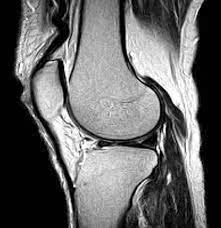Hot Take: Your MRI does not provide as much value to your issue as you may think! As the Performance-Based Physical Therapist at Conquer Movement, I'm thrilled to dive into a topic that often leaves athletes and active individuals seeking clarity – the role of MRIs in dealing with chronic aches/pains and injuries. Join me on this exploration of why relying solely on an MRI might not be the game-changer we hope for as you search for answers for your movement related problems.

Unmasking the Mirage
In the realm of chronic injuries, the MRI scan often masquerades as the ultimate truth serum, promising to unveil the hidden challenges within our bodies. However, as someone who spends their entire existence studying the human body, how it moves and the effects various amounts of loading can have on how we move, the reality is far from straightforward. While MRIs are excellent at capturing snapshots of soft tissues (ligaments,tendons, disc, etc) they may not capture the dynamic complexities that impact an athlete's performance.
The Multifaceted Nature of Athletic Injuries
The biggest thing we have to realize is that performance-based injuries rarely occur in isolation. They're influenced by a myriad of factors, including biomechanics, muscle imbalances, training regimens, sleep hygiene, nutrition, hydration and mental resilience. An MRI, though valuable when dealing with more traumatic type injuries, may only scratch the surface of the intricate tapestry that makes up an athlete's physical condition, leaving essential pieces of the puzzle unexplored and can often lead us chasing symptom relief rather than solving root cause problems.
The Performance Pitfalls of False Positives and Negatives
Relying solely on MRI results can lead to the performance pitfalls of false positives and negatives. A positive result might spotlight an abnormality that's unrelated to an athlete's performance, potentially leading to unnecessary interventions. Too often we see our athlete's coming into their initial evaluation distraught, as they've been told that surgery is the only option given the result of the picture taken of their injured body region. These drastic measures have been determined without actually looking at the mechanics of the movement that is contributing to the problem in the first place. This can lead the athlete to believe that if they undergo this surgical procedure, they'll be cured and simply be able to return to their high performance life without any issue. As a performance Physical Therapist, we know this couldn't be further from the truth. As we need to address the challenges of stability, load management, and biomechanical principles that quite frankly surgery will NOT correct. Conversely, if there is a true traumatic soft tissue problem, a false negative could downplay a significant issue, hindering an athlete's understanding of the true barriers to their optimal performance.
Dynamic Bodies, Static Images
Athletes are dynamic beings, constantly adapting to the challenges of their sport. An MRI, offering a static snapshot, might not capture the dynamic essence of athletic injuries. Movement, load, and functionality are key components of performance-based physical therapy, and an MRI may fall short in truly grasping the unique demands placed on an athlete's body. I'm often reminded of Family holiday pictures when I think of an MRI...bare with me.
Coming from a large family, being one of 16 cousins, it wasn't uncommon that holidays were controlled chaos. All of the cousins would pile down my grandparents basement wreaking havoc, until at some point my Aunt would demand a family picture, forcing all 16 of us to get in order and smile for the perfect family picture. On paper it shows a large family, smiling, getting along, everything perfect for the holiday. What it doesn't show is that 15 minutes before that picture was taken my grandmom burnt the casserole and cousin Tommy just finished teasing the younger cousins in a rousing game of keep-a-way. It was simply a picture, a still shot of ONE single moment in time, unable to capture the dynamics of what was happening in a highly active environment, much like the MRI.
Performance Optimization Through Comprehensive Physical Therapy
At Conquer Movement, our expert Physical Therapists champion a holistic approach to chronic injuries, prioritizing comprehensive assessments that delve into an athlete's performance history, movement patterns, and training regimen. By identifying and addressing the multifaceted factors impacting performance, we empower our clients to conquer their movement challenges and elevate their athletic prowess.

Imaging as a Performance Puzzle Piece
While MRIs hold a vital place in certain diagnostic scenarios, they should be seen as just one piece of the performance puzzle. Combining imaging with a thorough physical examination allows performance-based therapists to gain a more nuanced understanding of an athlete's condition. At Conquer Movement, we leverage a range of assessment tools to craft personalized performance strategies, ensuring our clients reach new heights in their athletic pursuits. Very rarely is MRI needed to truly solve a movement based issue.
In the dynamic world of performance and training, the allure of the MRI may seem compelling, promising a shortcut to performance optimization. Yet, as we've explored in this post, the reality is nuanced. True performance enhancement demands a holistic approach that goes beyond static images. At Conquer Movement, we are committed to empowering athletes through comprehensive assessments, evidence-based interventions, and a relentless pursuit of conquering the challenges that stand between them and peak performance. Remember, while an MRI captures a moment, it takes a performance-based therapist to unlock the full potential within an athlete.
